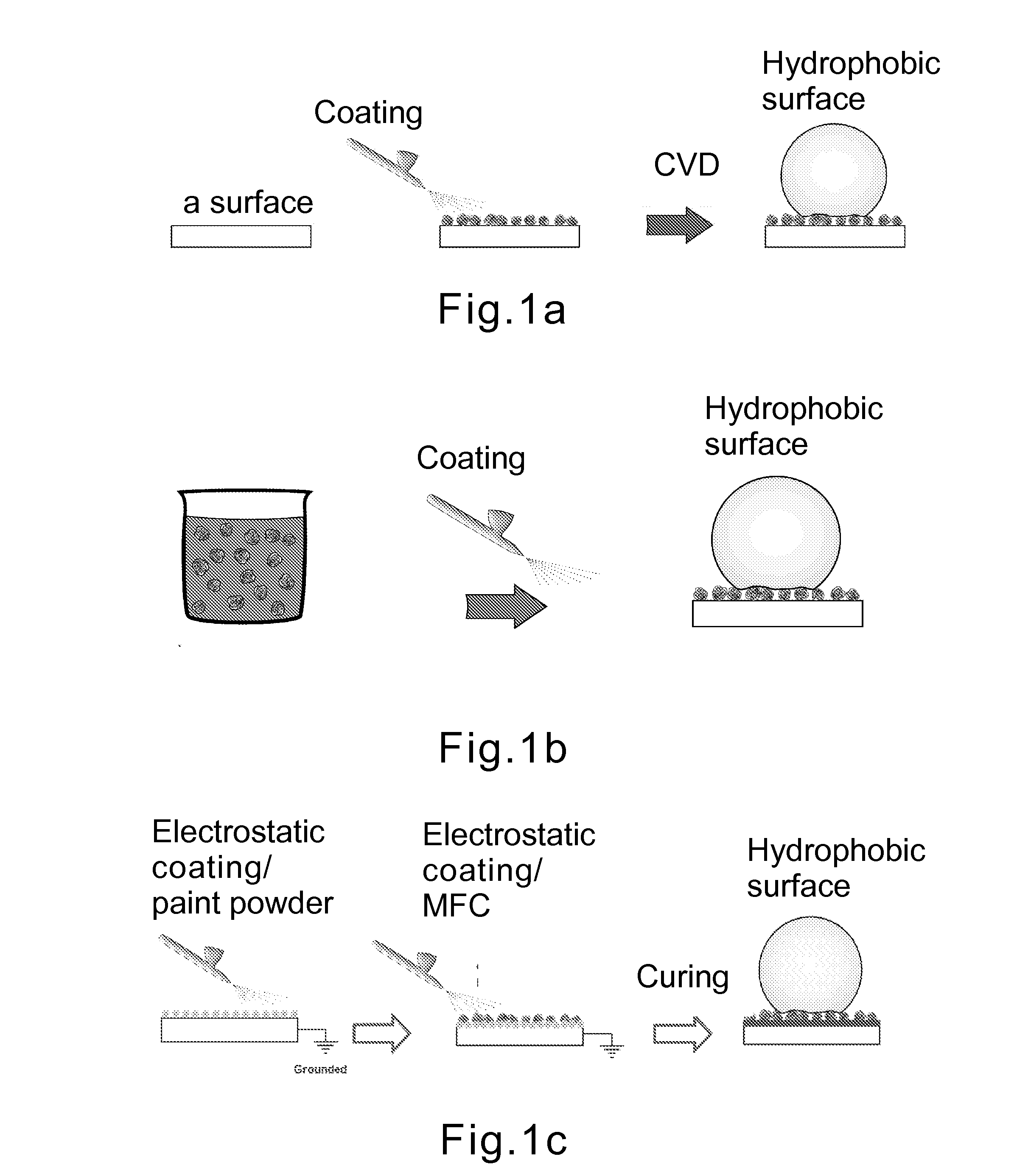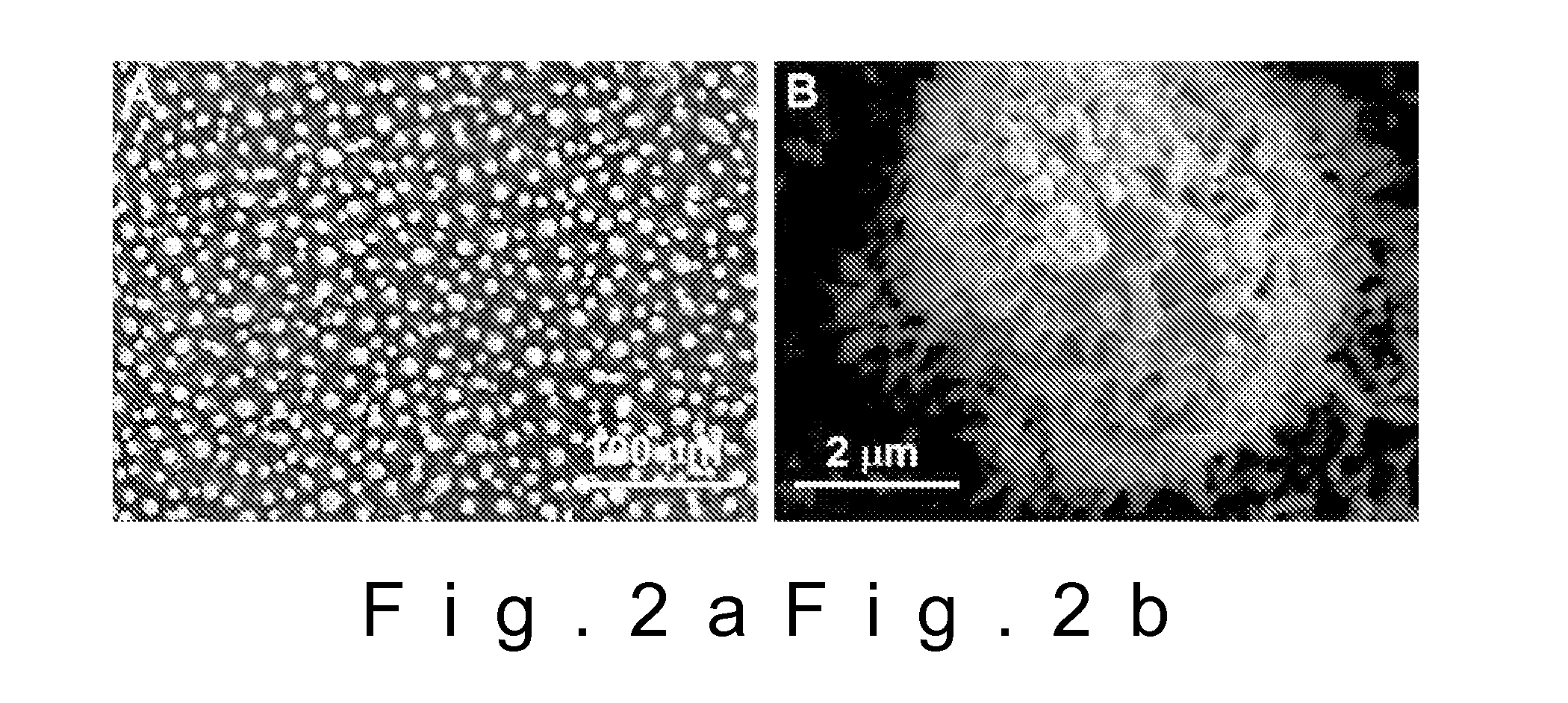Hydrophobic coating and a method for producing hydrophobic surface
a hydrophobic coating and hydrophobic technology, applied in the direction of adhesive types, rosin addition, chemical vapor deposition coating, etc., can solve the problem of too dense film, achieve the effect of reducing construction costs and maintenance, increasing longevity and reliability of power transmission systems
- Summary
- Abstract
- Description
- Claims
- Application Information
AI Technical Summary
Benefits of technology
Problems solved by technology
Method used
Image
Examples
example
Structure of a surface with spray-dried nanocellulose compared with a lotus leaf
[0096]FIGS. 2a and 2b (Sun et al. in Acc. Chem. Res. 2005, 38, 644-652) show micro- and nanostructures on a lotus leaf (Nelumbo nucifera). FIG. 2a shows a large-scale SEM image of the lotus leaf. Each epidermal cell forms a papilla and has a dense layer of epicuticular waxes superimposed on it. FIG. 2b shows a magnified image on a single papilla presented in FIG. 2a.
[0097]FIGS. 3a and 3b show micro- and nanostructures on the spray-dried nanocellulose particles. FIG. 3a shows large-scale SEM image of the particles on a SEM graphite tape. The size distribution is approximately 5-15 μm. FIG. 3b shows a magnified image of a single particle. The particle has the morphology of a shrunken sphere with a nanofibrous surface character. FIGS. 3c and 3d show high magnification SEM image on a surface with scale bars of 100 nm.
[0098]FIG. 4 shows a comparison of the surface structures of the lotus leaf (large picture)...
PUM
| Property | Measurement | Unit |
|---|---|---|
| contact angle | aaaaa | aaaaa |
| particle size | aaaaa | aaaaa |
| tilt angle | aaaaa | aaaaa |
Abstract
Description
Claims
Application Information
 Login to View More
Login to View More - R&D
- Intellectual Property
- Life Sciences
- Materials
- Tech Scout
- Unparalleled Data Quality
- Higher Quality Content
- 60% Fewer Hallucinations
Browse by: Latest US Patents, China's latest patents, Technical Efficacy Thesaurus, Application Domain, Technology Topic, Popular Technical Reports.
© 2025 PatSnap. All rights reserved.Legal|Privacy policy|Modern Slavery Act Transparency Statement|Sitemap|About US| Contact US: help@patsnap.com



